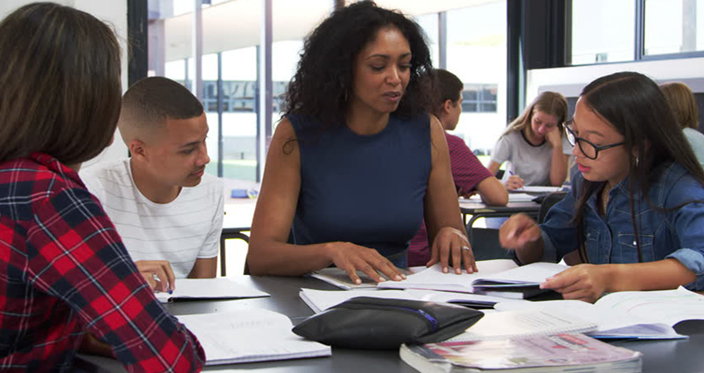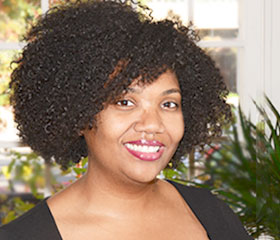
Flamboyan has been on a journey to understand what family engagement looks like in high school. This six-part series explores what we’ve learned along the way.
We’ve reached the final installment of our series highlighting five insights about how high school educators can effectively engage and partner with their students’ families to improve academic outcomes and post-secondary options.
To recap, so far we learned that in high school, relationships between students, families and educators still matter; families continue to play five essential roles to support student success; students need families and teachers to coach them to take responsibility for their own education by graduation and that there are five common barriers to schools and educators effectively engaging families at the high school level.
In last week’s installment around common barriers, those included educators harboring negative mindsets about students’ families, unwelcoming school environments, the complexities of communication structures and teachers’ roles not being designed with capacity for family engagement in mind. What if I told you that through the power of relationships, those barriers could disappear?
Addressing Bias in Educators
Professional development is essential for educators, and yet sometimes hours of training doesn’t yield impact. What most PD sessions are missing is an opportunity for educators to reflect on their practice and to apply their knowledge in the field. At Flamboyan’s partner middle schools, teachers undergo professional development around building sustainable relationships. The training underlines the importance of leveraging home visiting to understand the narratives of students and their families. Home visits not only offer educators the opportunity to learn of parents’ hopes and dreams for their students, but it also allows them to understand their student’s families and the environment their students are in when they are away from school.
Some educators at Flamboyan’s partner high schools are eager to dive into scheduling home visits with ninth grade families, while others prefer to make welcoming phone calls. Teachers are accustomed to imparting information to families, but home visits and welcome calls allow them to take a learner’s stance. Our partners at McKinley Tech, a top-rated Title I S.T.E.M. school in Washington, DC, just completed their family engagement pilot. These educators sought to identify the most effective forms of communicating with their students’ families, and their research highlighted that parents overwhelmingly appreciate proactive and positive communication from teachers and staff. Ninety-eight percent of their families rated receiving impromptu phone calls from staff as worthwhile.
One parent noted, “It was just nice to hear from them [their child’s teacher], and it wasn’t about a bad grade, or something my child did. They called to see how I was doing and wanted to know more about our experience at McKinley. They wanted to know how [I thought] they were doing, and how we could work together to support my child.” Their phone banking day was a success, and they plan to place calls to all families of incoming freshman students this fall.
The Cohort Model
You may be wondering; how will teachers know which families to call? Moreover, given the complex structure of high school, how will parents know who to call when they want and need information about their children’s academic progress? We live in an age where parents can log onto online gradebooks like Power School or Aspen and see real-time student information. But what does that data mean, and who can help them understand it?
We believe that a cohort model called an advisory, in which a group of students is assigned to an adult in the building, can provide a structure for meaningful two-way communication between educators and families. While the cohort model is beneficial in creating an intimate space for students and adults to build relationships to support the transition to college, ninth grade is key for implementation.
For high school students, ninth grade is the make-or-break year. A student’s freshman year GPA can not only predict their 11th grade GPA, but also whether they will graduate from high school. Ninth graders are still malleable, and research shows that the type of student they’ll become is determined during this year. This is also the time that they’ll need to learn how to navigate high school. A cohort with an advisor connects them to other students, an adult champion, and the additional resources they need to be successful. As I mentioned, parents need a go-to relationship with someone on staff to ensure a flow of consistent information about their student, since teachers are experts in content, not individual students. Parents and teachers need a dedicated structure, such as home visiting, that allows for consistent and proactive communication to support positive academic outcomes for students.
The cohort model provides schools the capacity to build meaningful reciprocal relationships with their students’ families and learn how best to partner with them. Something that is often overlooked is that a student’s sense of belongingness at school is crucial. Students who feel like they are part of the school community have a better high school experience and will be less likely to be pushed out of school. In order for this to happen, they need positive relationships with adults in their school building. Having a built-in advocate develops their muscle to take on being their own academic advocates over time.
We partner with families so that students can go on to have a fulfilling life. Oftentimes, students don’t know what that looks like. Educators and families need to have the post-secondary conversations with students early and often to help them understand their choices, and what actions they should be taking to have access to them. Each college counselor serving Washington, DC public schools supports 300 students, which doesn’t allow them to begin the post-secondary dialogue early enough. Having a cohort model creates the space for students to begin exploring their options.
This series gave you a peek into our journey into family engagement at the high school level. We are just getting started, and we are excited for what’s to come! Check out our Twitter feed for more content about what effective family engagement looks like in Washington, DC and across the country.

Julianne Boulware is the Director, School Partnerships Coach in our Washington, DC office. Learn more about her at https://flamboyanfoundation.org/team_members/julianne-boulware .